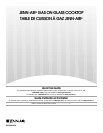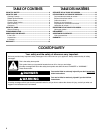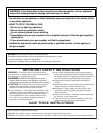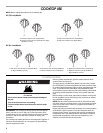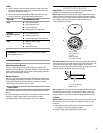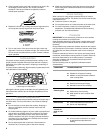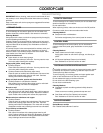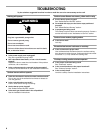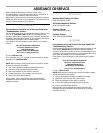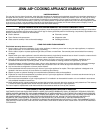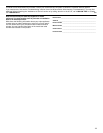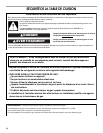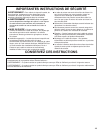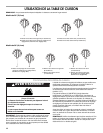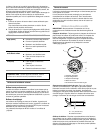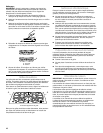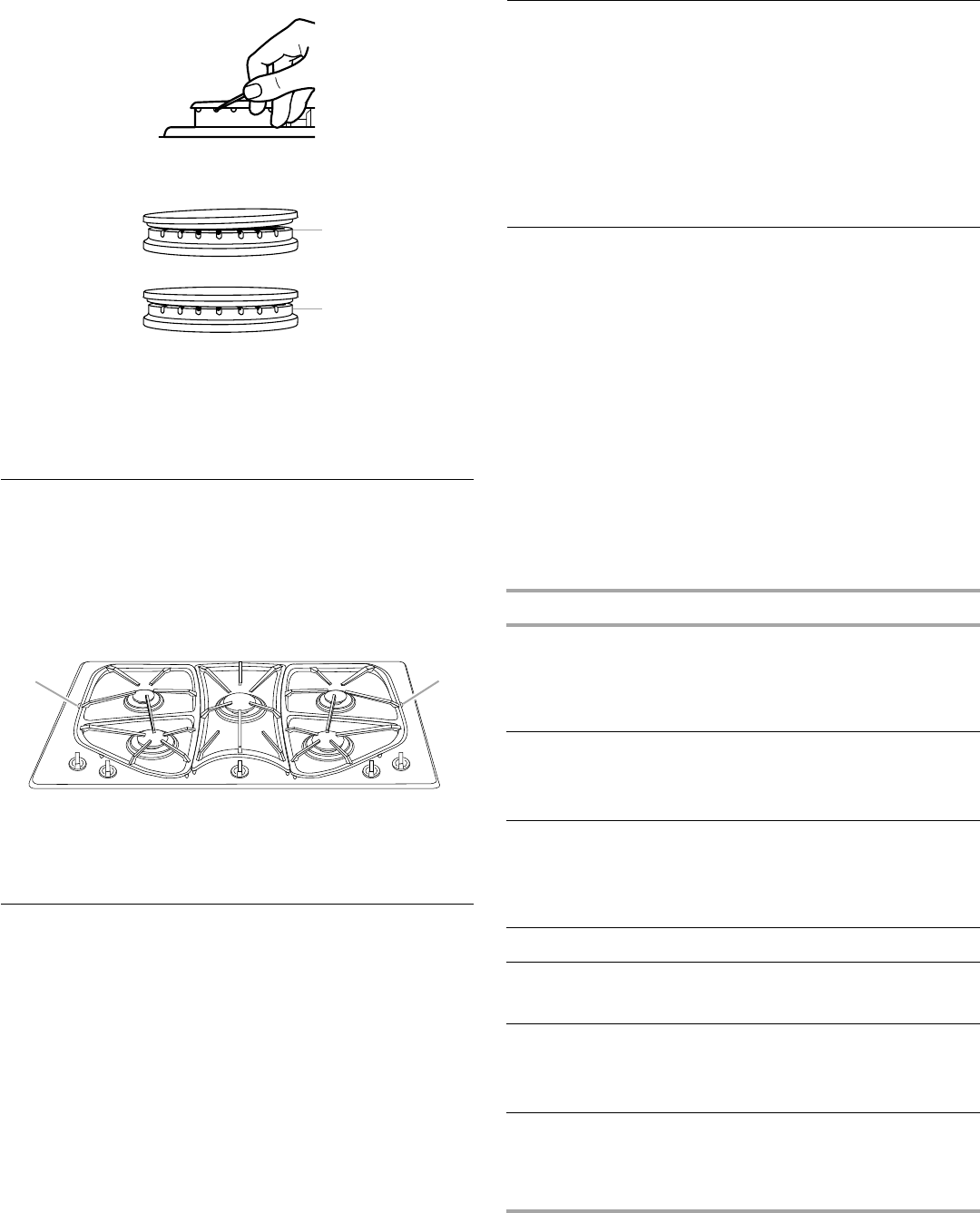
6
3. Clean clogged burner ports with a straight pin as shown. Do
not enlarge or distort the port. Do not use a wooden
toothpick. If the burner needs to be adjusted, contact a
trained repair specialist.
4. Replace the burner cap, making sure the the alignment pins
on the cap are properly aligned with the burner base.
5. Turn on the burner. If the burner does not light, check cap
alignment. If the burner still does not light, turn off the burner.
Do not service the sealed burner yourself. Contact a trained
repair specialist.
Surface Grates
The grates must be properly positioned before cooking. In the
proper position the grates should be flush and level. Improper
installation of the gates may result in chipping or scratching of
the cooktop.
To ensure proper positioning, align bumpers on grate bottom with
the indentations in the cooktop.
Although the burner grates are durable, they will gradually lose
their shine and/or discolor due to the high temperatures of the
gas flame.
Ceramic Glass Surface
Wiping off the cooktop before and after each use will help keep it
free from stains. For more information, see “General Cleaning”
section.
■ Do not store jars or cans above the cooktop. Dropping a
heavy or hard object onto the cooktop could crack the
ceramic glass.
■ For foods containing sugar in any form, clean up all spills and
soils as soon as possible. Allow the cooktop to cool down
slightly. Then, while wearing oven mitts, remove the spills
while the surface is still warm. If sugary spills are allowed to
cool down, they can adhere to the cooktop and can cause
pitting and permanent marks.
■ Do not allow objects that could melt, such as plastic or
aluminum foil, to touch any part of the entire cooktop.
■ Make sure the bottoms of pots and pans are clean and dry
before using them. Residue and water can leave deposits
when heated.
Home Canning
When canning for long periods, alternate the use of surface
burners between batches. This allows time for the most recently
used areas to cool.
■ Center the canner on the grate.
■ Do not place canner on 2 surface burners at the same time.
■ For more information, contact your local agricultural
department. Companies that manufacture home canning
products can also offer assistance.
Cookware
IMPORTANT: Do not leave empty cookware on a hot surface
cooking area, element or surface burner.
Ideal cookware should have a flat bottom, straight sides, and a
well-fitting lid and the material should be of medium-to-heavy
thickness.
Rough finishes may scratch the cooktop. Aluminum and copper
may be used as a core or base in cookware. However, when used
as a base they can leave permanent marks on the cooktop or
grates.
Cookware material is a factor in how quickly and evenly heat is
transferred, which affects cooking results. A nonstick finish has
the same characteristics as its base material. For example,
aluminum cookware with a nonstick finish will take on the
properties of aluminum.
Use the following chart as a guide for cookware material
characteristics.
A. Incorrect
B. Correct
A. Grate alignment indentations
A
B
A
A
COOKWARE CHARACTERISTICS
Aluminum
■ Heats quickly and evenly.
■ Suitable for all types of cooking.
■ Medium or heavy thickness is best for
most cooking tasks.
Cast iron
■ Heats slowly and evenly.
■ Good for browning and frying.
■ Maintains heat for slow cooking.
Ceramic or
Ceramic glass
■ Follow manufacturer’s instructions.
■ Heats slowly, but unevenly.
■ Ideal results on low to medium heat
settings.
Copper
■ Heats very quickly and evenly.
Earthenware ■ Follow manufacturer’s instructions.
■ Use on low heat settings.
Porcelain
enamel-on-
steel or cast
iron
■ See stainless steel or cast iron.
Stainless steel ■ Heats quickly, but unevenly.
■ A core or base of aluminum or copper
on stainless steel provides even
heating.



